Nationality SpanishPortuguese | Name Alonso Coello | |
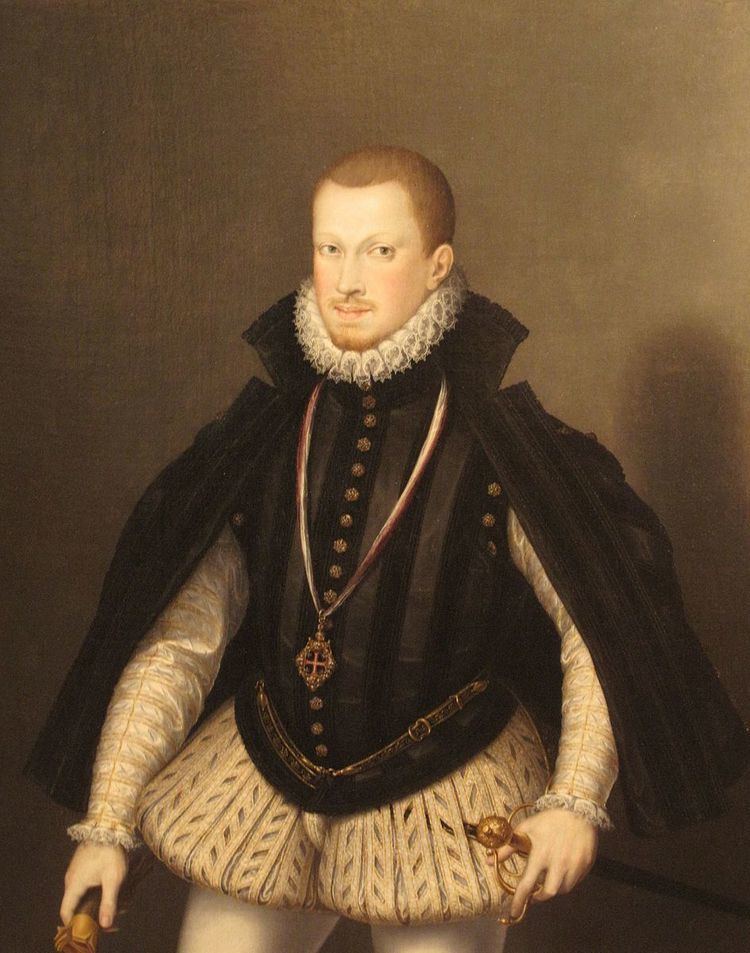 | ||
Full Name Alonso Sanchez Coello Born c. 1532 Benifairo de les Valls, Valencia Died 8 August 1588Madrid, Castile Movement Spanish RenaissancePortuguese Renaissance | ||
Alonso s nchez coello bach concerto for violin in d minor
Alonso Sánchez Coello (1531 – 8 August 1588) was a Spanish portrait painter of the Spanish Renaissance. He is mainly known for his portrait paintings executed in a style, which combines the objectivity of the Flemish tradition with the sensuality of Venetian painting. He was court painter to Philip II.
Contents
- Alonso s nchez coello bach concerto for violin in d minor
- Detalle del cuadro vista de sevilla alonso s nchez coello museo de am rica
- Life
- Work
- References

Detalle del cuadro vista de sevilla alonso s nchez coello museo de am rica
Life
Alonso Sánchez Coello was born in Benifairó de les Valls, near Valencia in Spain. He spent his childhood there until the death of his father when he was around ten years old. He left for Portugal c. 1541 or 1542 to live with his grandfather, who was then in the service of the Portuguese monarchs and had been raised to the Portuguese nobility. Coello's years in Portugal and his family name of Portuguese origin led to a long-standing belief that he was in fact Portuguese. His grandfather's master King John III of Portugal sent the young painter to study with Anthonis Mor (also known as Antonio Moro) in Flanders around 1550. He came under the protection of Antoine de Granville, bishop of Arras, who was also a patron of Mor.
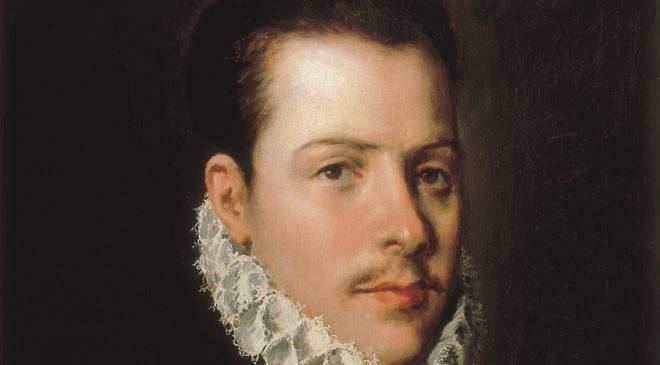
In 1552, the painter went to Lisbon with Anthonis Mor when Charles V commissioned Mor to paint the Portuguese royal family. For a few years, Sánchez Coello remained in Portugal working for the court of the heir to the throne, João Manuel, Prince of Portugal. After the prince's death, Sánchez Coello moved to the Spanish court of Philip II, having been recommended by the widow of John, Juana, who was the sister of the Spanish king. In 1555, Sánchez Coello was in Valladolid working for the Spanish court.

Sánchez Coello became Court Painter in 1560. Sánchez Coello married Louisa Reyaltes, a daughter of a silversmith, in either 1560 or 1561 in Valladolid. The couple had seven children. Coello's daughter, Isabel Sánchez (1564–1612), became a painter. She studied and helped in her father's workshop. The painter moved with the court to Toledo and finally settled in Madrid in 1561. Coello worked on religious themes for most of the palaces, particularly for El Escorial, and larger churches. Philip II held him in high esteem and was godfather to two of his daughters. The painter spent the remainder of his life at the court, becoming a personal favourite of the king and acquiring honours and wealth.
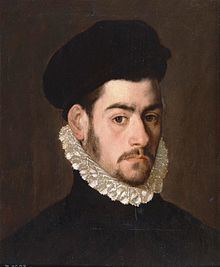
Among his disciples were Juan Pantoja de la Cruz and Felipe de Liaño. Lope de Vega praised Coello in his work Laurel to Apolo. Alonso Sánchez Coello died in Madrid on 8 August 1588.
Work
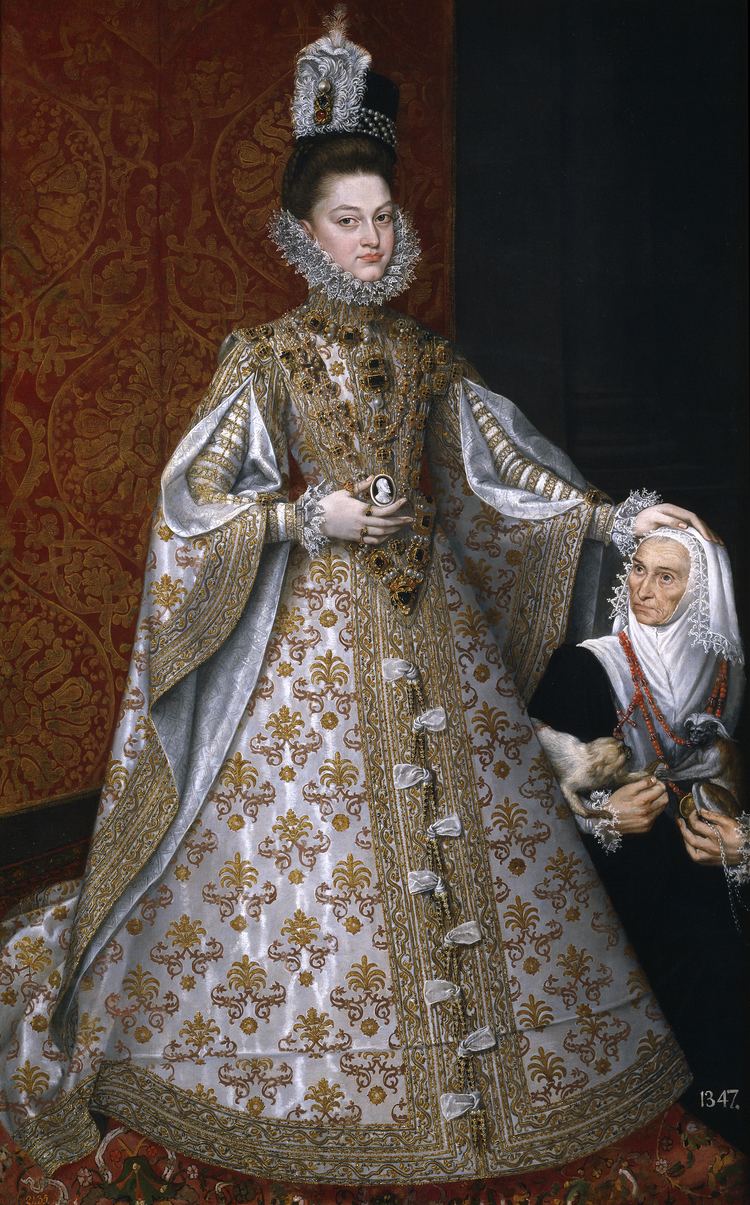
Sánchez Coello produced both portraits and religious paintings. The religious works, many of which were created for El Escorial, are conventional and undistinguished. They are still a good example of the more austere style. Among his religious paintings is the St. Sebastian in the church of San Geronimo, also in Madrid. To the artist is also attributed a topographical view of the busy port of Sevilla (Museum of the Americas, Madrid).

Sánchez Coello was a follower of Titian, and, like him, excelled in portraits and single figures, elaborating the textures of his armours, draperies, and such accessories in a manner very masterly manner. this had a notable influence on Velázquez's style regarding those objects. From Mor, Coello learned precision in representation, and from Titian he incorporated Venetian gold tones, generous workmanship, and the use of light on a canvas.
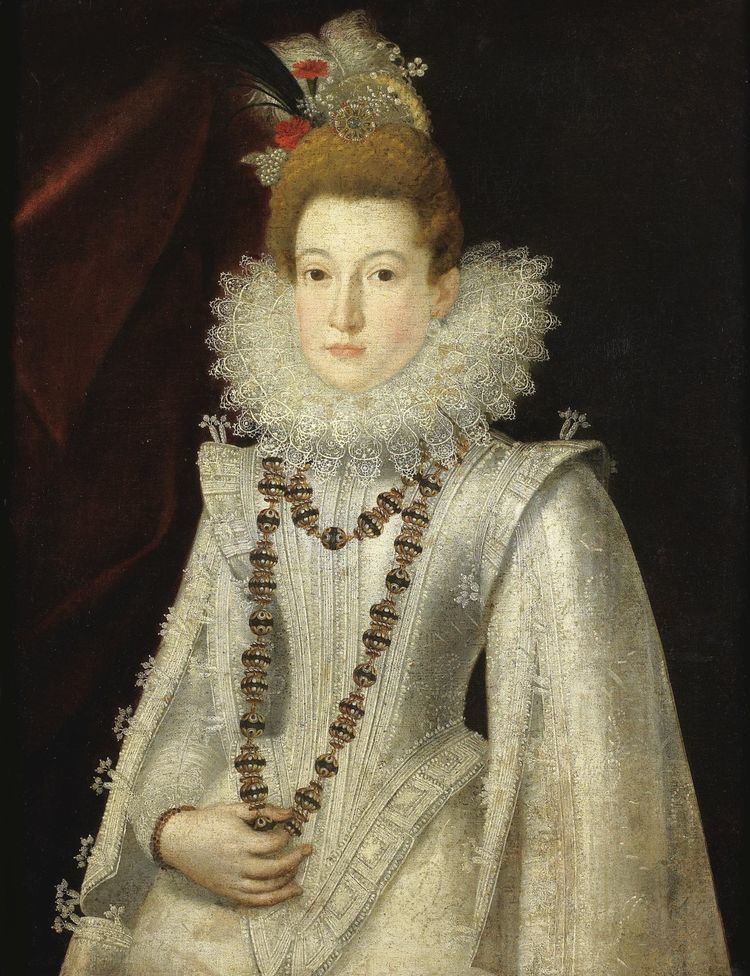
It is for his portraits that the artist is remembered. They are marked by an ease of pose and execution, a dignity and sobriety of representation, and warmth of colouring. Although influenced by the paintings of both Mor and Titian, these portraits display an original talent and reflect admirably the modesty and formality of the Spanish court. Paintings of Philip II (c. 1580) and Infanta Isabel Clara Eugenia (1571), both in the Prado, Madrid, are two of his finest works. Sánchez Coello also produced a touching series of paintings of the children of Philip II. The extreme delicacy of the children's portrait softens the rigid etiquette and fashion of the court. The double portrait of the Infantas Isabella Clara Eugenia and Catalina Micaela (1568–9; Madrid, Convent of the Descalzas Reales) is an example.
Sánchez Coello's reputation as a portraitist has been diminished by the innumerable copies and imitations that wrongly bear his name. While his debt to Mor is evident, Sánchez Coello brought distinctive qualities to the court portrait, notably a sharp sense of colour, a crispness of execution and a heightened realism.
There has not been a biography of Coello, and many of his works are still confused with those of Sofonisba Anguissola, who painted royal portraits in the same period, and Juan Pantoja de la Cruz, Coello's pupil.
